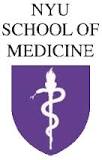Quantitative MRI for Functional Imaging of the Testis: A New Methodology for Evaluation of the Infertile Male
| Status: | Enrolling by invitation |
|---|---|
| Conditions: | Women's Studies, Infertility |
| Therapuetic Areas: | Reproductive |
| Healthy: | No |
| Age Range: | 18 - Any |
| Updated: | 8/26/2018 |
| Start Date: | June 2016 |
| End Date: | August 2019 |
Infertility-the inability to conceive despite one year of properly timed unprotected
intercourse-is a common problem. Of all types of male factor infertility, non-obstructive
azoospermia may be the most difficult for couples. Importantly, patients with non-obstructive
azoospermia are asked to make difficult decisions in terms of reproductive choice; surgical
attempts at identifying sperm (microdissection testicular sperm extraction) are often offered
to these patients without a guarantee of being able to identify sperm. New methodologies in
terms of evaluation of azoospermic males PRIOR to the couple embarking upon IVF are needed
urgently. The other potential benefit of non-invasive determination of testis function and
spermatogenesis would be the potential targeting of sperm extraction procedures. We
hypothesize that quantitative MRI employing advanced functional metrics will be sensitive to
functional and metabolic differences between subsets of azoospermic cases and will improve
upon current characterization of patients with this condition. Moreover, it is believed that
these techniques will provide complementary information, such that they may be combined in a
synergistic fashion for targeted extraction methodologies.
intercourse-is a common problem. Of all types of male factor infertility, non-obstructive
azoospermia may be the most difficult for couples. Importantly, patients with non-obstructive
azoospermia are asked to make difficult decisions in terms of reproductive choice; surgical
attempts at identifying sperm (microdissection testicular sperm extraction) are often offered
to these patients without a guarantee of being able to identify sperm. New methodologies in
terms of evaluation of azoospermic males PRIOR to the couple embarking upon IVF are needed
urgently. The other potential benefit of non-invasive determination of testis function and
spermatogenesis would be the potential targeting of sperm extraction procedures. We
hypothesize that quantitative MRI employing advanced functional metrics will be sensitive to
functional and metabolic differences between subsets of azoospermic cases and will improve
upon current characterization of patients with this condition. Moreover, it is believed that
these techniques will provide complementary information, such that they may be combined in a
synergistic fashion for targeted extraction methodologies.
Of all types of male factor infertility, non-obstructive azoospermia may be the most
difficult for couples. Azoospermia (both obstructive and non-obstructive) occurs in
approximately 10-20% of all infertile males with non-obstructive azoospermia encompassing the
majority of cases.
In this study, quantitative MRI will be investigated by employing advanced functional metrics
for addressing these challenges. Specifically, diffusion-weighted imaging will be assessed,
multi-echo T2 mapping, arterial-spin labeling, and spectroscopy. No intravenous contrast will
be administered for purposes of this study. It is hypothesized that these techniques will be
sensitive to functional and metabolic differences between subsets of azoospermic cases and
will improve upon current characterization of patients with this condition. Moreover, it is
believed that these techniques will provide complementary information, such that they may be
combined in a synergistic fashion for targeted extraction methodologies.
The goal of this exploratory study is to investigate whether associations exist between
quantitative MRI metrics and the previously noted features of testis architecture.
difficult for couples. Azoospermia (both obstructive and non-obstructive) occurs in
approximately 10-20% of all infertile males with non-obstructive azoospermia encompassing the
majority of cases.
In this study, quantitative MRI will be investigated by employing advanced functional metrics
for addressing these challenges. Specifically, diffusion-weighted imaging will be assessed,
multi-echo T2 mapping, arterial-spin labeling, and spectroscopy. No intravenous contrast will
be administered for purposes of this study. It is hypothesized that these techniques will be
sensitive to functional and metabolic differences between subsets of azoospermic cases and
will improve upon current characterization of patients with this condition. Moreover, it is
believed that these techniques will provide complementary information, such that they may be
combined in a synergistic fashion for targeted extraction methodologies.
The goal of this exploratory study is to investigate whether associations exist between
quantitative MRI metrics and the previously noted features of testis architecture.
Inclusion Criteria:
- Men with normospermia who are initiating testosterone replacement and are over 18
years of age will provide semen samples to NYU Fertility Center.
Exclusion Criteria:
- Ferromagnetic implants such as aneurysm clips, surgical clips, prostheses, artificial
heart, valves with steel parts, metal fragments, shrapnel, bullets, tattoos near the
eye, or steel implants.
- Substance abuse, medical, psychological, or social conditions that may interfere with
the patient's participation in the study.
- All women are excluded as such patients do not have the relevant anatomy being
considered in this study.
We found this trial at
1
site
New York University School of Medicine NYU School of Medicine has a proud history that...
Click here to add this to my saved trials
